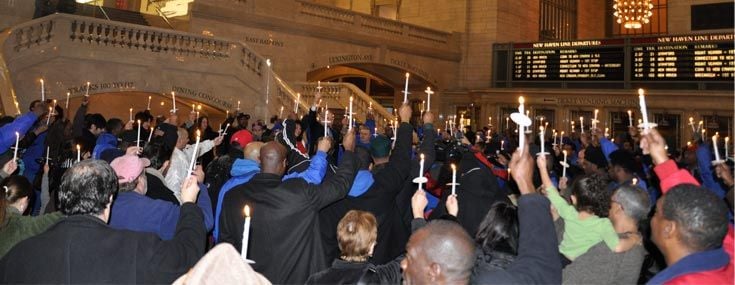
Newsroom
| < Return To News Archive | |
| November 25, 2001 | |
| A Shelter Plan Wins in Court, But Residents Aren't Swayed | |
by Erika Kinetz | |
Last fall, The Doe Fund won a 22-year, $176 million city contract to transform the building, an abandoned knitting factory, into a 400-bed shelter for homeless men. The plans have been tangled in legal and political turmoil since. But now, The Doe Fund, a nonprofit organization for helping the homeelss, is finally free to start building. On Nov. 14, State Supreme Court in Brooklyn dismissed a case brought by a coalition of residents, politicians and businesses to block the development on the ground that the impact on the neighborhood had not been adequately assessed. George T. McDonald, founder and president of the fund, said he expected to start construction in two months and to open in early 2003. But Martin S. Needelman, a lawyer representing the coalition said his clients were considering an appeal. Residents say their neighborhood has little to offer the homeless. "There's no place for them to come out and have a snack," said Douglas McKinnon, who has lived in the area since 1990. The site is surrounded by large, low buidlings that belong to candy makers, bakeries, tortilla factories and import-export companies. The nearest shoping strip is about a mile away. "Can you imagine 400 men down on their luck coming to an area like this and thinking life would get any better?" said Donna Hoffman, an owner of a soft drink bottler that has been in the neighborhood since 1946. Mr. McDonald, however, said the shelter would not depend on local amenities. "We have everything that everybody needs inside of the facility," he said. Residents of this largely low-income, Latino area worry about protecting what to them is a fragil peace. "We have enough problems keeping the prostitutes from around here," said Mr. McKinnon, who has three sons. Local business owners said the shelter would hinder the economic progress of the area, which the state designated as an economic development zone in 1998. They are mainly concerned about a lack of parking spaces and increased foot traffic that could disrupt the careful choreography of trucks and forkliftsthat currently dominates the sidewalks. Since the court spurned their claims, both Ms. Hoffman and Sanford Wiener, an owner of a candy maker that employs 75 people, said they were considering leaving. "We hear their concerns," Mr. McDonald said. "We are very willing to work with them." He maintained that the shelter would be a boon to the neighborhood. "We'll help clean it up," he said. "There are prostitution and drugs there now. That won't be there when we get there." It will also help the city. The shelter would replace roughly half the beds at the 30th Street Men's Shelter near Bellevue Hospital, which the city needs to relocate before New York University can use the land for its planned East River Science Park. | |
| < Return To News Archive | ^ back to top |